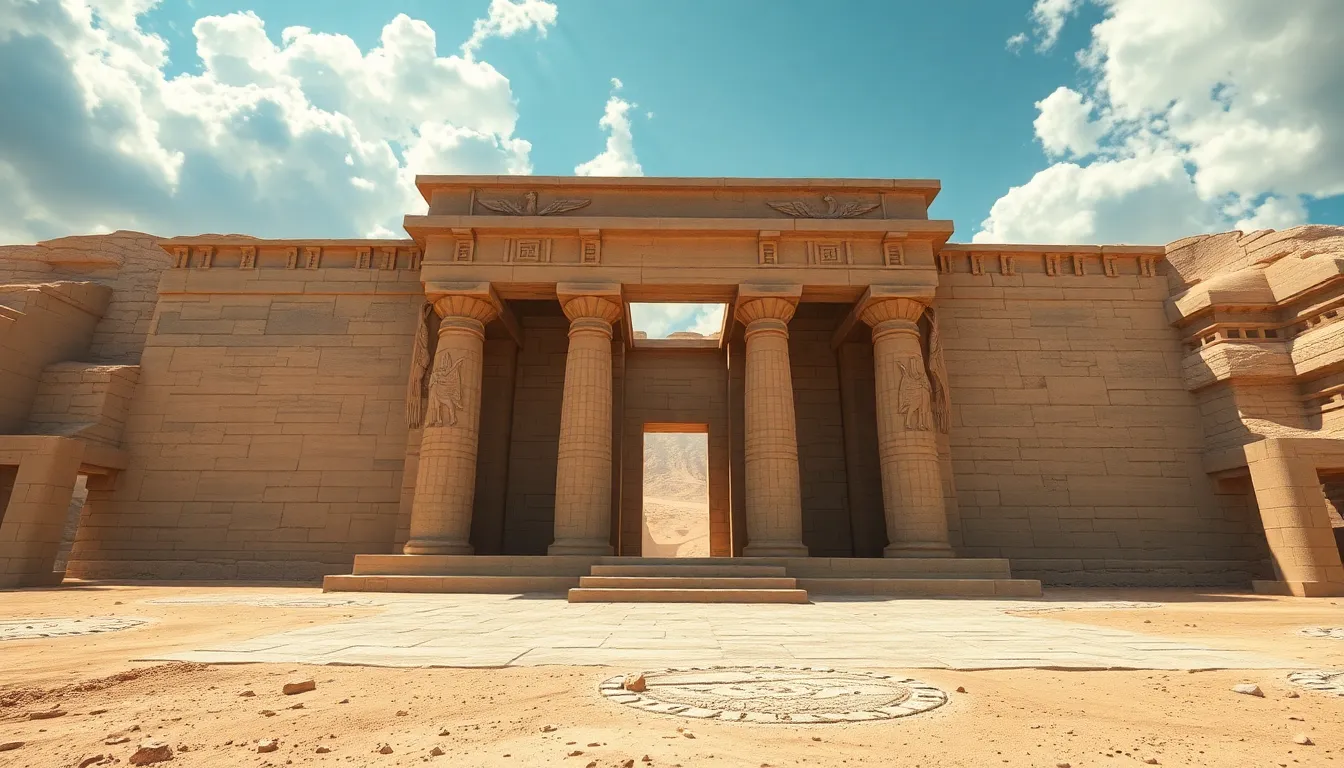The Sacred Geography of the Temple of Ra
I. Introduction
The Temple of Ra, dedicated to one of the most significant deities in ancient Egyptian mythology, stands as a testament to the intricate relationship between geography and spirituality in ancient Egypt. This temple not only served as a place of worship but also as a focal point for the community’s religious activities and beliefs.
In ancient Egyptian religion, sacred geography played a crucial role. The positioning of temples, the alignment with celestial bodies, and the incorporation of natural landscapes into religious practices underscored the importance of the environment in their spiritual worldview. This article aims to explore the various aspects of the Temple of Ra, focusing on its sacred geography, historical context, architectural features, rituals, and its lasting impact on both ancient and modern interpretations of Egyptian mythology.
II. Historical Context of the Temple of Ra
The Temple of Ra has its origins rooted in the early dynastic periods of ancient Egypt, with construction attributed to various Pharaohs who sought to honor the sun god. Over the centuries, the temple underwent numerous expansions and renovations, reflecting the political and religious changes of the times.
- Origins and Construction: The earliest structures dedicated to Ra can be traced back to the Old Kingdom, but it was during the New Kingdom that the temple reached its zenith.
- Key Historical Figures: Notable Pharaohs, including Ramses II and Akhenaten, played pivotal roles in the temple’s development, integrating their own religious beliefs into the worship of Ra.
- Cultural Significance: The Temple of Ra served not only as a religious site but also as a center for astronomical observations and a place for communal gatherings, highlighting its multifaceted role in ancient Egyptian society.
III. Location and Orientation
The geographical location of the Temple of Ra was meticulously chosen to align with the sun’s path. Situated along the banks of the Nile, the temple’s orientation was designed to maximize exposure to sunlight, which was critical for the rituals conducted therein.
- Geographical Location: The temple is located in Heliopolis, which was considered a significant religious site in ancient Egypt.
- Significance of Orientation: The entrance of the temple faced east, allowing the first rays of the morning sun to illuminate the sanctuary, symbolizing rebirth and renewal.
- Cosmological Relationship: The location of the temple was not random; it mirrored ancient Egyptian cosmology, where the sun’s journey across the sky was emblematic of life, death, and resurrection.
IV. Architectural Features
The architectural design of the Temple of Ra reflects sacred geography through its layout and symbolic structures. The temple complex was carefully crafted to embody the spiritual significance of the sun god.
- Design Elements: The use of open courtyards, pylons, and sanctuaries was intentional, creating a journey that reflected the sun’s path.
- Symbolism: Elements such as obelisks, which represented the sun rays, and sacred lakes that mirrored the sky were integral to the temple’s layout.
- Artworks and Inscriptions: The walls of the temple were adorned with intricate carvings and inscriptions that depicted Ra’s myths, further emphasizing his importance in the divine order.
V. Ritual Practices and Sacred Spaces
Ritual practices at the Temple of Ra were central to the worship of the sun god. These ceremonies were deeply intertwined with the temple’s sacred geography, creating a profound spiritual experience for the devotees.
- Description of Rituals: Daily rituals included offerings, prayers, and recitations that honored Ra and sought his blessings for the land and its people.
- Sacred Spaces: Various areas within the temple complex, such as the sanctuary and the open courtyard, were designated for specific rituals, allowing for a structured approach to worship.
- Connection to Sacred Landscape: The rituals were not only acts of devotion but also a way to connect the people with the divine, reinforcing their place within the larger cosmological framework.
VI. Theological Significance of Ra
Ra, the sun god, held a paramount position in ancient Egyptian theology. He was not only revered as a deity of light but also as a symbol of creation and sustenance.
- Overview of Ra: As one of the oldest gods in the Egyptian pantheon, Ra embodied the sun and was believed to travel through the sky in his solar boat.
- Relationship with the Sun: Ra’s daily journey across the sky symbolized the cycle of life and death, providing essential light and warmth to the earth.
- Impact on Sacred Geography: Ra’s worship influenced the placement and construction of temples, which were often aligned with solar events such as solstices and equinoxes.
VII. Modern Interpretations and Archaeological Discoveries
In recent years, archaeological discoveries related to the Temple of Ra have shed new light on its historical significance and the role of sacred geography in ancient Egyptian religion.
- Recent Excavations: Archaeological teams have uncovered artifacts, inscriptions, and structural remains that provide insights into the temple’s function and importance.
- Modern Scholarly Interpretations: Scholars have increasingly recognized the complexity of sacred geography, emphasizing its role in religious practices and community identity.
- Contemporary Understanding: These findings have influenced modern views on ancient Egyptian culture, highlighting the interconnectedness of geography, spirituality, and daily life.
VIII. Conclusion
In summary, the Temple of Ra serves as a focal point for understanding the intricate relationship between sacred geography and ancient Egyptian religion. From its historical context and architectural features to the rituals performed and the theological significance of Ra, each aspect of the temple reflects a deep reverence for the natural world and its connection to the divine.
The enduring legacy of the Temple of Ra continues to influence both historical scholarship and modern interpretations of ancient Egyptian culture. By exploring the sacred geography of this temple, we gain valuable insights into how ancient civilizations understood their environment and its role in their spiritual lives.
Ultimately, the significance of sacred geography in ancient cultures underscores the profound connection between people, their beliefs, and the landscapes they inhabit.




